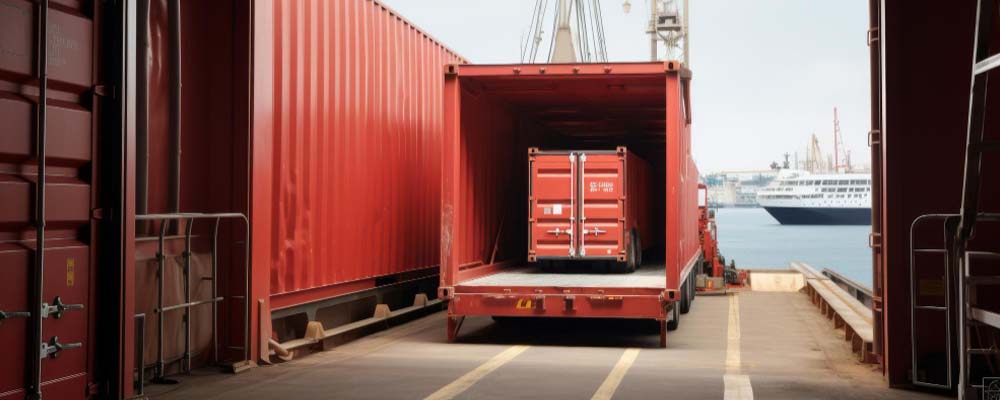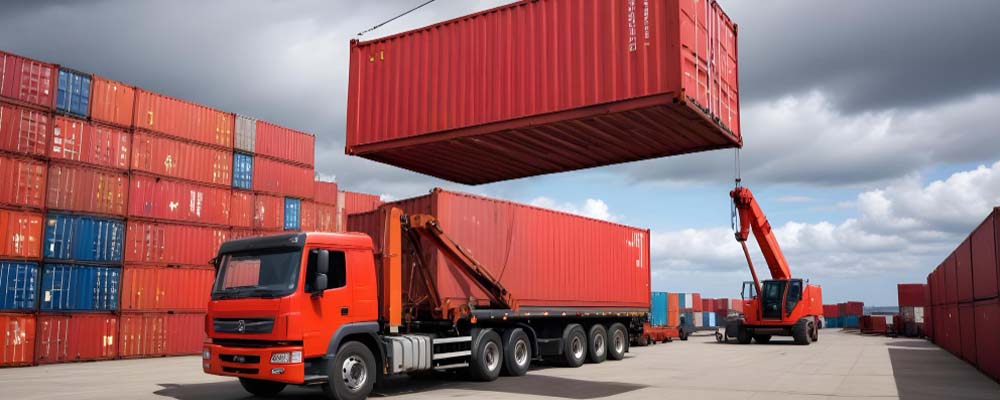
In the complex world of logistics, efficiently moving shipping containers is a crucial skill. Whether you’re a freight forwarding company, logistics provider, importer, exporter, customs broker, manufacturer, or e-commerce business, understanding how to move these hefty units can significantly impact your operations. This blog post will guide you through everything you need to know about moving shipping containers, from preparation to execution.
Essential Considerations Before Moving a Shipping Container
Assessing Your Needs
Before planning the move, it’s essential to understand your specific requirements. Are you transporting goods domestically or internationally? How many containers are involved? Knowing these details helps in selecting the right method and equipment for the job.
Understanding Container Types
Shipping containers come in various sizes and types, including standard dry containers, refrigerated containers, and flat racks. Each container type comes with specific requirements and distinct advantages. Make sure you’re familiar with the container type you’re dealing with to ensure a smooth moving process.
Regulations and Permits
Compliance with local and international regulations is non-negotiable. Make sure you have all necessary permits and adhere to legal requirements. This not only avoids fines but also ensures the safety of your cargo and personnel.
How to Move a Shipping Container?
Planning the Move
Detailed planning is the backbone of a successful container move. Create a timeline that includes all stages of the move—preparation, transportation, and final placement. Ensure all stakeholders are on the same page to avoid last-minute hiccups.
Choosing the Right Equipment
Selecting the right equipment is crucial. Depending on the size and weight of the container, you may need specialized lifting equipment like forklifts, cranes, or container handlers. Make sure the equipment is properly maintained and handled by skilled professionals.
Safety Measures
Safety should never be compromised. Always conduct a risk assessment and implement necessary safety measures. This includes securing the container properly, using personal protective equipment (PPE), and adhering to safety protocols during loading and unloading.
 Methods of Moving a Shipping Container and How Much Does It Cost
Methods of Moving a Shipping Container and How Much Does It Cost
Road Transport
One of the most common methods is road transport. Using container trucks, you can move containers over short and long distances. The cost varies based on distance, container size, and regional tariffs but typically ranges from $1,000 to $5,000.
Rail Transport
Rail transport is often used for long-distance moves within the same country or continent. It’s cost-effective and environmentally friendly. Costs can range from $500 to $3,000 depending on the distance and services required.
Sea Transport
For international moves, sea transport is the go-to option. Container ships can carry thousands of containers across the globe. The cost can vary widely, from $2,000 to $10,000, depending on the route, container size, and additional services like insurance and tracking.
 How to Move a Shipping Container: Common FAQs
How to Move a Shipping Container: Common FAQs
What’s the Most Efficient Method to Move a Shipping Container?
The best method depends on various factors like distance, cost, and urgency. Road transport is ideal for short distances, while rail and sea transport are better for long-distance and international moves.
How Long Does it Take to Move a Shipping Container?
The duration depends on the distance and chosen method. Road transport might take a few days, while rail and sea transport could take several weeks.
What Documents are Needed for Moving a Shipping Container?
Essential documents include a bill of lading, commercial invoice, packing list, and any required permits. Make sure all paperwork is in order to avoid delays.
Are Shipping Containers Easy to Move?
Size and Weight Considerations
Shipping containers are designed for easy transport, but their size and weight can pose challenges. Standard containers can weigh up to 4 tons when empty, requiring specialized equipment and careful handling.
Accessibility
Ease of movement also depends on the accessibility of the pickup and drop-off locations. Narrow streets, overhead obstacles, and uneven terrain can complicate the process.
Technological Advances
Advancements in technology have made moving containers easier. Automated container handlers and GPS tracking systems streamline the process, ensuring efficiency and safety.
How Freight Forwarding Companies Can Help You Move Shipping Containers
Expertise and Experience
Freight forwarding companies bring a wealth of expertise to the table. They understand the intricacies involved in moving shipping containers, from compliance to logistics planning.
Comprehensive Services
These companies offer a range of services, including documentation, transportation, and storage. Their all-inclusive approach guarantees a seamless experience for you.
Cost-Effectiveness
By leveraging their network and resources, freight forwarding companies can offer cost-effective solutions. They negotiate better rates with carriers and provide value-added services like insurance and real-time tracking.
 Conclusion
Conclusion
Moving shipping containers might seem daunting, but with the right knowledge and resources, it can be a seamless process. Assess your needs, choose the appropriate method, and ensure all safety measures are in place. Engaging a freight forwarding company can further simplify the process, offering you peace of mind and cost savings.
Ready to make your next move? Sign up with our trusted freight forwarding networks today and experience hassle-free container logistics. If you have any more questions, feel free to reach out for personalized advice.
By mastering the art of moving shipping containers, you’ll not only streamline your logistics but also gain a competitive edge in the industry. Happy shipping!




 Methods of Moving a Shipping Container and How Much Does It Cost
Methods of Moving a Shipping Container and How Much Does It Cost How to Move a Shipping Container: Common FAQs
How to Move a Shipping Container: Common FAQs Conclusion
Conclusion



